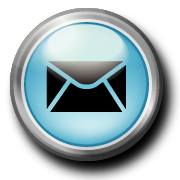 This blog entry covers email signatures:
This blog entry covers email signatures: What is a email signature?
It is an electronic signature with your contact info at the bottom of your email messages.
Email mail signatures usually provides the key information for the receiver to know how to contact you in return.
Why: You may be wondering what's wrong with the standard email header name and address that's included in the email header. While there is nothing wrong with using the standard email signature format options. However, given that deaf/ hard of hearing consumers / professionals tend to utilize several modes of communication while at work - Thus your friend or colleague may want to learn more about the alternative ways they can contact you. You can also proactively (voluntarily) indicate to them on the various ways they can contact you.
I have found that the use of email signatures at work proves to be more beneficial than at home because I work with co-workers country-wide. Personal contacts usually already know the best way to reach me.
What's in a signature?
Basically it can be whatever your like, but I recommend limiting it to the various ways/preferences on how you can be contacted.
Below is a fictional mock up of my email signature to illustrate an example of an email signature.
| John Doe Blog Writer (job title) Company XYZ Chicago, Illinois http://www.companyxyz.com/ | Email: john.doe@mail.com Sms: 123-321-4321 Message Service: 123-123-2356 Fax: 333-555-2222 Notes SameTime: John Doe |
Comments:
- Adjust the description names to your preference.
- If you have a 10 digit relay number include it. I usually indicate it by calling it "Message Service" so the words "Relay Service" doesn't alienate some people.
- If you have an internal instant messages program at work: include its name.
- If you have access at work to one of the public instant messages providers like: Aim, Gtalk, MSN, Yahoo, etc. Include the info as well. Such as: Aim: Johndoe
- If applicable, add your VP number or ip address.
- Some people may include links to other relevant information such as their LinkedIn or Facebook profiles or personal web sites. However I would be cautious about including such in your work email signature.
On the PC side, both Notes and Ms-Outlook provides ways of settling up your signature to be automatically inserted in your email messages. Refer to your software help function on how to set one up.
Ms-Outlook allows you to utilize more than one email signature. This is helpful if you have more than one email account and/or have different contact preferences depending on who you are corresponding with.
Most wireless devices allow you to include a signature automatically. Some even allow multiple signatures but that can be tricky to set up and is not discussed here.
Bottom line is that by setting up your email program to automatically include a preformatted email signature, you can increase the chances of your messages being returned or be contacted in the future.
Format your signature depending on your needs. I don't recommend including any personal information such as your SSN or home address to protect your identity.
Lastly, be sure to test your email signature by emailing yourself until you are satisfied on how it looks to ensure that its error free and neatly organized.
Email away!




1 comment:
Good post! I just set up my own email signature in Outlook recently. The emails of my coworkers who had already done it looked more professional (than mine) by including their job title, etc. I can see how that would be very important if you have business contacts outside of your company.
Post a Comment